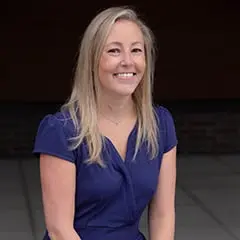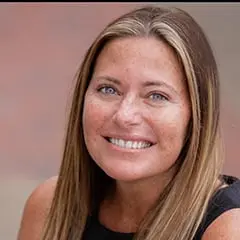 | 1.5 LU | HSW |
 | 1.5 LU | HSW |
Call to Action:
Abstract: Explore how engagement-driven design is reshaping teaching and learning for a post-COVID, AI-empowered era at Gladstone Elementary in Cranston, RI. In this session, building principals Amy and Amy, alongside a dedicated interdisciplinary team of designers, will share their journey of engaging students, families, and educators to support a bold, inclusive vision for the future of learning. This project highlights how authentic, long-term engagement and innovative design—ranging from AI-supported planning tools connected with reimagined learning spaces to student-led art and furniture design projects—have fostered a strong foundation for improving learning outcomes in an increasingly complex education climate. Presenters will share how these efforts are driving academic success, engaging teachers in new practices, and embedding a legacy of collaboration and inclusion in every corner of the school, all driven by the catalyst and commitment to building a “New Gladstone.”
Learning Objectives:
Design of Educational Facilities
Aligning Educational, & Community vision with design to support a regenerative mindset for a sustainable and future ready Educational Facility.

Regan is a Principal and studio leader for Finegold Alexander’s educational and cultural projects. She is passionate about design for education and creating spaces that are welcoming, supportive, and inspiring to teaching and learning. Regan is a true consensus builder, leading school communities and large stakeholder groups to collaborative and cost-effective solutions. She is the past A4LE New England Chapter President and is an Accredited Learning Environment Planner.

Amy is Gladstone Elementary School Assistant Principal in Cranston, Rhode Island, and she is committed to the academic and social emotional success of the students. She strives to promote a sake, kind and fun learning environment where students are encouraged to work together and try new things. As a Principal, Amy believes that relationships between families and school members are essential to make a positive difference in the lives of the students.

Mike has worked in education innovation and 21st century learning environments since beginning his career in 2009. His expertise in formal and informal learning settings has helped him succeed in roles connecting community organizations and K-12 schools through experiential project and place-based education pedagogy. Mike uses human-centered design thinking strategies to inform his process and as a result helps create youth-centered learning environments designed to transform the way students experience learning.

Amy has been an elementary educator for 22 years starting her career as a teacher. For the past 5 years Amy has been an elementary principal for Cranston Public Schools, where she continues to build the foundation for 21st century learning environments and project-based learning for her staff. Amy is passionate about equity, innovation, and student growth, and continues to lead with a vision for transformative education that nurtures creativity, adaptability, and love for learning.